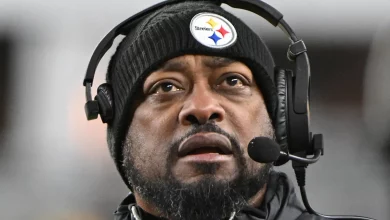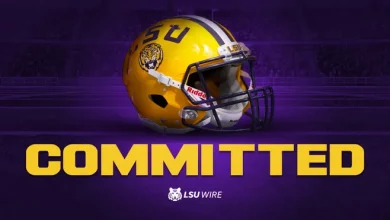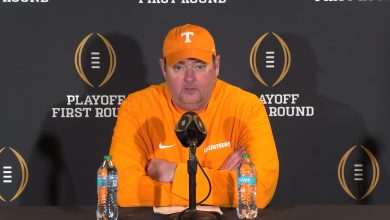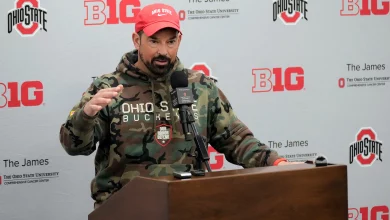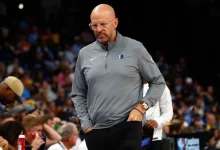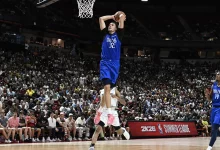Last season, Georgia and Alabama lost the college football championship. Is NIL at fault?

Is NIL at Fault for Georgia and Alabama Losing the College Football Championship?
The 2023 college football season ended with the Alabama Crimson Tide and the Georgia Bulldogs both falling short of securing the national championship, an outcome that raised eyebrows given the dominant status both programs held in recent years. As the season unfolded, many fans, analysts, and experts began to wonder: was NIL (Name, Image, and Likeness) to blame for these upsets? Could the newly implemented NIL system be affecting the ability of powerhouse programs like Alabama and Georgia to dominate in the same way they had in previous years?
NIL, which officially came into play in 2021, has transformed the landscape of college athletics. It allows college athletes to profit from their name, image, and likeness, giving them opportunities to sign sponsorship deals, make money off social media platforms, and, in some cases, even negotiate for significant sums of money to attend particular schools. NIL’s introduction has led to concerns about the potential impact on competitive balance and recruitment across college football, particularly for the teams that had historically been at the top. Programs like Georgia and Alabama, which have enjoyed sustained success under legendary coaches like Nick Saban and Kirby Smart, may now be facing new challenges in recruiting and maintaining that dominance in the face of rapidly changing dynamics.
But does this mean NIL is to blame for Georgia and Alabama’s inability to secure another national championship in 2023? In order to answer this question, it’s important to take a step back and evaluate the full picture, analyzing how NIL has impacted recruiting, player development, coaching, and the overall competitive balance in college football.
What Is NIL? A Quick Overview
Before diving into the specifics of how NIL could be affecting college football’s elite programs, it’s important to understand what NIL is and why it matters. NIL refers to the ability of college athletes to profit from their name, image, and likeness. This could include endorsement deals, social media posts, personal appearances, and even partnerships with businesses or brands. The system was established in July 2021 by the NCAA following pressure from state laws, courts, and athletes’ advocacy groups, who argued that college athletes should be able to capitalize on their marketability. NIL opened the door for athletes to earn money based on their status and popularity, something that was previously prohibited under NCAA amateurism rules.
Since its inception, NIL has completely reshaped college athletics, especially in college football, where players are some of the most visible and marketable athletes in the world. The system has made recruiting much more complex, as programs now have to consider not only the athletic prowess of their recruits but also their potential earning power off the field.
NIL’s Impact on Recruiting
One of the most significant ways that NIL has impacted college football is through its influence on recruiting. Historically, top-tier programs like Georgia and Alabama have built their success on attracting the best talent from across the country, utilizing their strong recruiting departments, high-profile coaching staffs, and the allure of playing for national championships to land elite recruits. However, with the introduction of NIL, recruiting has become a more competitive and financially driven landscape, with athletes now considering the potential financial benefits of playing for specific schools.
Programs that can offer athletes the chance to earn significant NIL compensation have gained an edge in recruiting. Schools in major metropolitan areas or those with large media markets (such as Texas, California, or Florida) are especially well-positioned to leverage NIL opportunities for recruits. Many top players are now looking at schools not just for their football programs and coaches, but also for their ability to provide NIL deals that could help athletes capitalize on their marketability while in college.
In theory, this could affect the recruiting efforts of programs like Alabama and Georgia. These two schools have typically dominated in recruiting battles because of their long-standing success and national appeal. However, their success has traditionally been built on hard-nosed football, elite player development, and a culture of winning. In a world where NIL is a factor, the allure of playing for a program that can secure substantial endorsement deals may have led recruits to consider other schools, especially if they could earn more in NIL compensation elsewhere.
The Case for Georgia and Alabama: Where Did They Fall Short?
Georgia and Alabama are undoubtedly two of the most powerful programs in college football. Both schools have been at the pinnacle of the sport in recent years, with Georgia securing the national championship in 2022 and Alabama dominating the 2010s with multiple championships under Nick Saban. Despite these successes, both teams faced setbacks in the 2023 season that prevented them from winning it all.
Georgia’s Struggles
Georgia entered the 2023 season as the defending national champions, having secured the 2022 College Football Playoff (CFP) title with an overwhelming victory over TCU. On paper, Georgia appeared to have the talent to repeat, with quarterback Carson Beck, a seasoned offensive line, and one of the nation’s top defenses. However, the Bulldogs faltered during the season, losing to Alabama in the SEC Championship Game and failing to make it back to the CFP final.
Some analysts have suggested that Georgia’s recruiting efforts have been impacted by the rapid rise of NIL-driven recruiting. While Georgia has certainly had its share of recruiting successes, there are signs that the shift in the recruiting landscape could have impacted their ability to attract the top talent needed to maintain their dominance. As other programs, particularly in the SEC, began to secure NIL deals for their top recruits, Georgia faced more competition than ever before in securing the very best players.
Additionally, Georgia’s emphasis on player development has long been a hallmark of Kirby Smart’s coaching philosophy. However, it’s possible that some players in the 2023 recruiting class or transfer portal might have opted for schools where NIL opportunities were more pronounced. This shift toward financially motivated recruitment could have contributed to Georgia’s fall from championship contention, as the Bulldogs may have had a harder time keeping pace with the rapid influx of NIL-fueled offers from rivals.
Alabama’s Upset
Alabama, once the undisputed king of college football under Nick Saban, had a somewhat rocky 2023 campaign. The Crimson Tide, despite a strong roster, were unable to make it past Georgia in the SEC Championship Game, which prevented them from securing a spot in the CFP final. The loss left many wondering whether the traditionally dominant program had lost its edge.
Like Georgia, Alabama’s recruiting success has traditionally been built on Saban’s ability to recruit, develop, and retain top talent. However, in the NIL era, Alabama has faced new challenges. The transfer portal and NIL-driven recruitment have led to some players, particularly those on the fringe of playing time or seeking more lucrative NIL deals, seeking opportunities elsewhere. Additionally, Alabama’s reliance on coaching and development may have been overshadowed by schools that were able to offer more financial incentives.
Another area where NIL may have played a role in Alabama’s struggles is their traditionally strong defensive recruiting. Alabama’s defense has long been a dominant force, and under Saban, the Tide has been able to attract some of the best defensive recruits in the country. However, the rise of NIL and changes in the recruiting landscape have made it easier for other programs to offer lucrative deals to defensive recruits. This, in turn, may have led to Alabama’s defensive recruiting slipping just slightly compared to years past.
NIL’s Influence on Competitive Balance
NIL has certainly had a significant impact on the competitive balance in college football. Historically, schools like Alabama, Georgia, Ohio State, and others have been able to attract top recruits based on their tradition of winning, high-level coaching, and ability to develop players into NFL prospects. However, with the introduction of NIL, some programs with large media markets or wealthy boosters have been able to outspend traditional powers in recruiting, leading to a shift in the dynamics of college football.
While Alabama and Georgia are still among the elite programs in college football, they now find themselves in an era where NIL compensation plays a role in recruiting and player retention. As a result, these programs may not have the same level of dominance that they enjoyed in the past. NIL may not be the sole factor in Georgia and Alabama’s recent championship losses, but it has certainly contributed to a more level playing field in college football.



